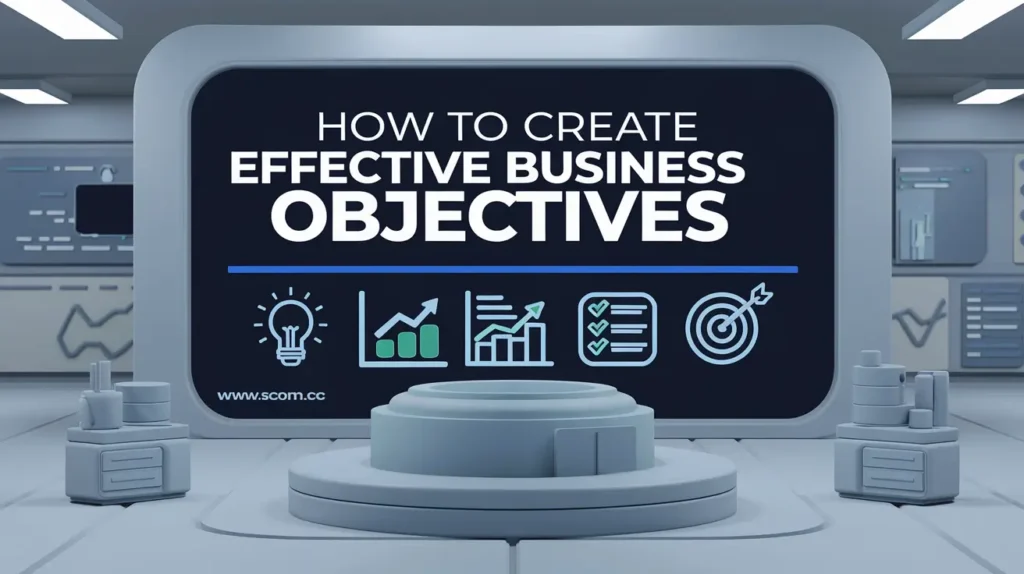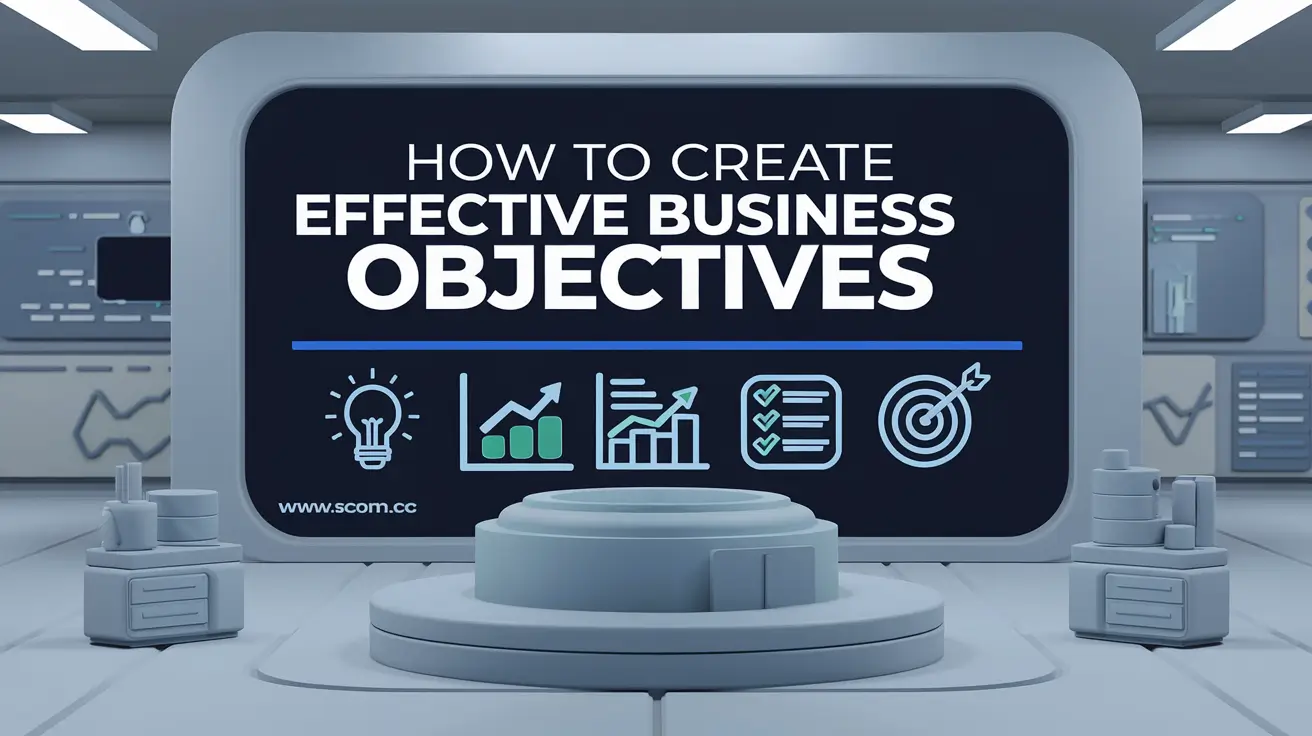How to Create Effective Business Objectives

- How to Create Effective Business Objectives
- 1. Understand the Purpose of Business Objectives
- 2. Align Objectives with Your Vision and Mission
- 3. Use the SMART Criteria
- 4. Prioritize Objectives Based on Impact
- 5. Break Down Objectives into Actionable Steps
- 6. Communicate Objectives Clearly
- 7. Monitor Progress and Adjust as Needed
- 8. Celebrate Success and Learn from Failure
- Conclusion: The Path to Effective Business Objectives
How to Create Effective Business Objectives
Creating effective business objectives is a crucial step in guiding your organization toward success. Business objectives serve as the foundation for your strategic planning, providing direction and measurable targets that align with your company's mission and vision. Well-defined objectives not only help you track progress but also ensure that every team member is working toward common goals. In this comprehensive guide, we will explore the key steps and principles for creating effective business objectives that drive growth and success.
1. Understand the Purpose of Business Objectives
Before you start crafting your business objectives, it's important to understand their purpose. Business objectives are specific, measurable goals that your organization aims to achieve within a defined timeframe. They serve several critical functions:
- Provide Direction: Objectives give your organization a clear path forward, helping you focus efforts and resources on achieving specific outcomes.
- Measure Success: By setting measurable objectives, you can track progress and determine whether you are on course to meet your goals.
- Align Teams: Clear objectives ensure that all team members are working toward the same priorities, promoting collaboration and alignment across the organization.
Understanding the purpose of your objectives is the first step in ensuring they are effective.
2. Align Objectives with Your Vision and Mission
Your business objectives should be directly aligned with your company’s vision and mission. The vision defines your long-term aspirations, while the mission outlines your organization’s purpose and core values. Effective objectives bridge the gap between where you are now and where you want to be in the future.
How to Align Objectives:
- Review Your Vision and Mission: Ensure you have a clear understanding of your organization’s long-term goals and core values.
- Identify Key Areas: Determine which areas of your business need to be addressed to achieve your vision.
- Create Objectives That Support the Mission: Craft objectives that directly contribute to fulfilling your mission and moving closer to your vision.
By aligning your objectives with your vision and mission, you ensure that every goal you set brings your organization closer to its ultimate purpose.
3. Use the SMART Criteria
One of the most effective ways to create business objectives is to use the SMART criteria. SMART stands for Specific, Measurable, Achievable, Relevant, and Time-bound. This framework ensures that your objectives are clear, realistic, and trackable.
SMART Criteria Explained:
- Specific: Clearly define what you want to achieve. Avoid vague language and ensure that your objective is focused.
- Measurable: Determine how you will measure success. Use quantitative metrics to track progress.
- Achievable: Ensure that the objective is realistic and attainable given your resources and constraints.
- Relevant: Make sure the objective is aligned with your broader business goals and priorities.
- Time-bound: Set a deadline for achieving the objective. This creates a sense of urgency and helps you stay on track.
Example of a SMART Objective:
Instead of saying, "Increase sales," a SMART objective would be: "Increase online sales by 20% over the next six months through targeted digital marketing campaigns."
This objective is specific (online sales), measurable (20% increase), achievable (with targeted marketing), relevant (to business growth), and time-bound (six months).
4. Prioritize Objectives Based on Impact
Not all objectives are created equal. Some will have a greater impact on your business than others. It’s important to prioritize your objectives based on their potential to drive growth and success.
How to Prioritize Objectives:
- Evaluate Impact: Assess how each objective will contribute to your overall business goals. Focus on those with the highest impact.
- Consider Resources: Ensure that you have the resources (time, money, personnel) to achieve your prioritized objectives.
- Balance Short-Term and Long-Term Goals: While it’s important to achieve quick wins, don’t neglect long-term objectives that will sustain your business over time.
By prioritizing objectives, you can allocate resources more effectively and ensure that your organization is focused on what matters most.
5. Break Down Objectives into Actionable Steps
Once you’ve defined and prioritized your objectives, the next step is to break them down into actionable steps. This ensures that your team knows exactly what needs to be done to achieve each objective.
How to Break Down Objectives:
- Create Action Plans: Develop a detailed plan that outlines the specific tasks, timelines, and responsibilities for achieving each objective.
- Assign Roles: Clearly define who is responsible for each task to ensure accountability.
- Set Milestones: Establish interim goals or milestones to track progress and keep the team motivated.
Breaking down objectives into actionable steps makes it easier to manage the process and ensures that nothing falls through the cracks.
6. Communicate Objectives Clearly
For business objectives to be effective, they need to be communicated clearly to all team members. Everyone in the organization should understand the objectives, why they are important, and how their role contributes to achieving them.
Tips for Clear Communication:
- Use Simple Language: Avoid jargon and make sure your objectives are easy to understand.
- Provide Context: Explain the reasoning behind each objective and how it fits into the larger business strategy.
- Regular Updates: Keep your team informed about progress and any changes to the objectives.
Clear communication fosters alignment and ensures that everyone is working toward the same goals.
7. Monitor Progress and Adjust as Needed
Setting objectives is not a one-time task. Monitoring progress and making adjustments as needed is crucial for staying on track and ensuring success. Regularly review your objectives to assess whether they are still relevant and achievable.
How to Monitor Progress:
- Track KPIs: Use key performance indicators (KPIs) to measure progress toward each objective.
- Conduct Regular Reviews: Hold regular meetings to review progress, celebrate successes, and address challenges.
- Be Flexible: Be willing to adjust your objectives if circumstances change or if you identify more effective ways to achieve your goals.
Continuous monitoring and adjustment keep your objectives dynamic and responsive to changes in the business environment.
8. Celebrate Success and Learn from Failure
Finally, it’s important to celebrate success when you achieve your objectives and to learn from failures when you don’t. Recognizing accomplishments boosts morale and reinforces positive behavior, while analyzing failures provides valuable insights for future improvement.
How to Celebrate and Learn:
- Acknowledge Achievements: Celebrate milestones and successful completion of objectives to motivate your team.
- Conduct Post-Mortem Analysis: When objectives aren’t met, analyze what went wrong and identify lessons for the future.
- Iterate and Improve: Use the insights gained from both successes and failures to refine your future objectives and strategies.
By celebrating success and learning from failure, you create a culture of continuous improvement within your organization.
Conclusion: The Path to Effective Business Objectives
Creating effective business objectives is a critical component of strategic planning and overall business success. By aligning your objectives with your vision and mission, using the SMART criteria, prioritizing based on impact, and regularly monitoring progress, you can ensure that your objectives drive meaningful results. Clear communication, actionable steps, and a willingness to adjust when needed will keep your organization focused and agile in achieving its goals.

If you enjoyed this article and found it valuable, we encourage you to explore our news and valuable information section, where you'll find more relevant and up-to-date content that may pique your interest. Additionally, if you are seeking advice or need guidance on a specific topic, we suggest visiting our services section. There, you will find a variety of options designed to assist and support you in addressing your needs. Feel free to check out both sections to get the information and assistance that best suits your requirements.

Leave a Reply